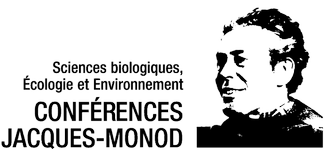|
Ligand-gated ion channels from atomic structure to synaptic transmission
REGISTRATION REQUEST and ABSTRACT SUBMISSION DEADLINE: : February 18, 2019
To attend the conferences Jacques Monod, an abstract submission is mandatory, Registrations request without abstract submission will not be processed, except in specific cases (i. g. for Publishers : please contact chairperson).
Chairperson: Pierre-Jean Corringer Unité Récepteurs-Canaux, CNRS UMR 3571, Institut Pasteur, 25 rue du Docteur Roux, 75724 Paris Cedex 15, France Phone: +33 (0)1 40 61 31 02 Email: pierre-jean.corringer@pasteur.fr
Vice-chairperson: Ingo Greger Neurobiology Division, MRC Laboratory of Molecular Biology, Cambridge, CB2 0QH, United Kingdom Phone: +44 (01223) 267 046 Email: ig@mrc-lmb.cam.ac.uk
Communication between neurons is primarily performed by chemical synapses, which promote either excitatory or inhibitory transmission. The time course and strength of synaptic communication is regulated by a wide range of chemical signals, underlying the unique ability of neuronal networks to compute and store information. Central to the complex machinery of chemical synapses are ligand-gated ion channels (LGICs), that sense the neurotransmitters released from the presynaptic compartment, converting this chemical signal into an electrical signal through the opening of their intrinsic ion channel. LGICs are thus highly dynamic allosteric proteins, and their study has been revolutionized by recent advances in biochemistry and X-ray crystallography techniques as well as, more recently, by single particle cryo-electron microscopy. Together with electrophysiology and fluorescence techniques at the ensemble and single molecule level, as well as molecular dynamic simulation and mass spectrometry, the molecular mechanisms of signal transduction, and their regulation by drugs, lipids and associated proteins is being emerging. This meeting will show the current advances on the major classes of receptors, notably the trimeric P2X (ATP-gated purinergic receptors) and ASICs (acid-sensing ion channels), the tetrameric glutamate receptors, as well as the pentameric receptors, including nicotinic acetylcholine, 5-HT3 serotonin, glycine and γ-aminobutyric GABAA receptors. Other channels and receptors including GPCRs will also be presented. In addition, pLGICs will also be replaced in the synaptic context, and their interaction with accessory and scaffolding proteins, as well as their mobility, diffusion and aggregation will be addressed using cutting edge imaging techniques. Throughout the sessions, we will also address how the fundamental knowledge gathered by combined structural and functional approaches is currently applied to invent novel chemical tools such as light-activated channels, as well as to develop new classes of allosteric effectors. These multidisciplinary challenges and many others will be addressed at this meeting. It will be a great opportunity to foster new collaborations to undertake novel challenges that will push further our understanding of the molecular mechanisms of signal transduction the are at the heart of the functioning of the nervous system. Applications submission Registration fee (including board and lodging) 460 € for PhD students
Application for registration details here : - their curriculum vitae The abstract must respect the following template: TemplateResumeFile After deadline, the organizers will select the participants. Except in some particular cases approved by the Chairperson, it is recommended that all selected participants present their work during the conference, either in poster form or by a brief in- session talk. The organizers choose the form in which the presentations are made. No payment will be sent with application. Information on how and when to pay will be mailed in due time to those selected.
|


